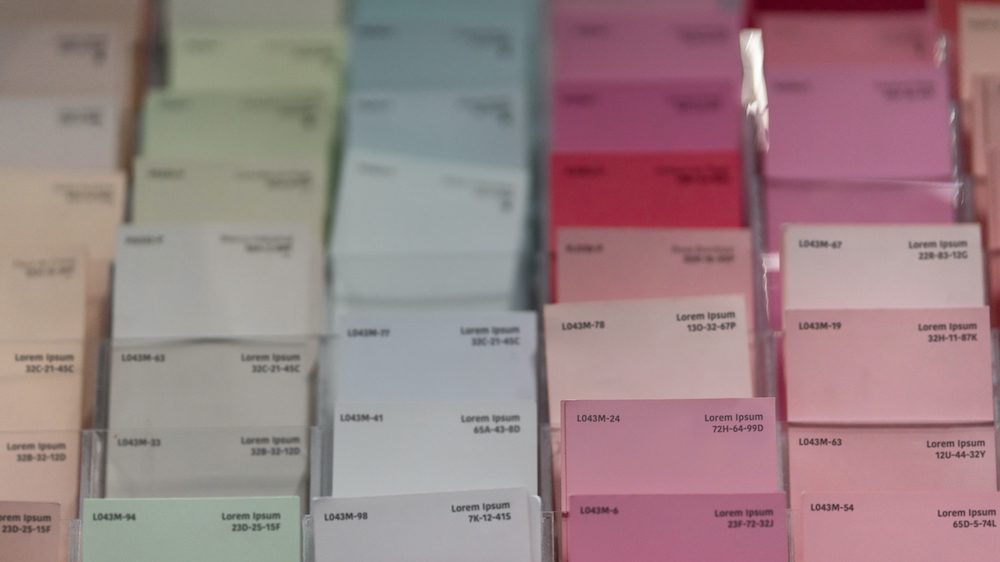
Getty Images
Two years ago, we painted a major living area in our home—a large, open-concept space that contains our family room and kitchen, with high ceilings and lots of natural light. We took it from a garish mustard yellow to white. The room now looks so light, so bright, so green.
How could this be? It turns out, our home is surrounded by trees, and during the day, the light flooding through the windows carries a green tint, which shows up on our white walls. We hadn’t considered this possibility when we’d picked what we thought was the perfect shade of white. Oops.
The fact is, as simple as it may seem to pick a paint color, there’s a host of factors to consider beyond the colors you like. Even when you narrow it down, for each color there are literally hundreds of shades and sheens, and each will look a bit different depending on where it’s painted.
So how do you choose the right one? Here are some factors experts say you should consider to find a color you won’t regret.
Determine what mood you want the space to convey
Before you determine how you want to paint your space, you want to consider why you’re painting it. Paint has the power to significantly change a room, but it’s important to determine the goal for that change.
Erika Woelfel, vice president of color and creative services at Behr Paint, says an important consideration is mood.
“When people are looking at a painting project, they’re usually looking for a transformation to happen, and mood is a big part of that,” Woelfel says. “So how you want the room to feel is often a good way to help determine the right color. For example, a brighter room is more energetic, while neutrals are calmer.”
Are you looking for a bright and peppy perk-up, or are you craving a tranquil escape? Asking yourself these kinds of questions can help you at least determine a starting point on the color spectrum.
Keep tabs on what colors are in the room already
Woelfel says people also often forget to consider an entire space when choosing a color. Inside, that means coordinating colors with things like the cabinetry, flooring, and hardware. The same idea holds true outside.
“In the excitement of selecting paint colors for the exterior of a home, you can forget to consider the colors of the architectural details you aren’t painting or changing,” says Jessica Barr, national trainer and paint application expert for Behr Paint. “Make sure the colors of the shingles, brick, stonework, and light fixtures complement the exterior paint colors you choose.”
Pick a paint sheen, too
Once you choose the color, you’re not done—you must also consider a paint’s finish, which cannot be accurately evaluated through an app. In general, the choices fall into three categories: flat or matte, satin, and semigloss or gloss. They determine how reflective a paint is and can significantly affect how a particular paint color looks on your walls.
“People very often forget to consider the sheen of a paint,” Woelfel says. “The higher the sheen, the deeper the color looks. When it’s flat or matte, the light gets absorbed, but when it’s glossy, the color looks deeper, because there’s a shine to that surface.”
You must also consider where you’re applying that paint. For example, higher-gloss paints tend to be easier to clean, so they’re better for high-traffic areas, although they do highlight imperfections. Matte paints are more difficult to clean, but they’re better at hiding imperfections and may be good for ceilings and hallways. Satin finishes fall somewhere in the middle, and are a popular choice for bedrooms, living rooms, and playrooms.
For more information on choosing the best paint sheen, Home Depot offers the following video:
Use paint color apps to test it out
Once you have a general idea of the color or colors you like, it’s time to start narrowing things down further. The good news is there are online tools to help you make the right paint choices and set that mood, many of which don’t even require you to leave your couch.
For example, Home Depot’s ProjectColor app lets you snap pictures of various areas of your home, then try out different paints on them. It will make suggestions and help you find versions that coordinate with furniture or other items in the spaces.
Similar functionality can be found with the Sherwin-Williams Color Snap Visualizer and Behr’s Paint Your Place technology.
But don’t depend on these apps entirely. One variable that can’t be accurately reflected in pictures is the light in the space you want to paint.
“The type of light you have in a room really determines how that color looks,” says Barr.
What a color looks like in one room may be different in another, and what looks just fine at one time of the day may look not so fine (in my case, green) at other times.
Try a paint swatch first
The only way to truly see how a paint will look on your walls, considering all these elements, is to actually put some on your walls, also known as swatching. Most brands sell small containers of their paints for this purpose, so you don’t have to buy an entire gallon just to test out a color.
Paint a swatch as large as possible, then observe it at various times throughout the day to see how it changes with the light. Painting various spots throughout the room and observing them in different types of weather is helpful, too.
If it leaves you less than enthused, then it’s time to try something new.
The post How To Pick a Paint Color You Won’t Regret—Inside and Out appeared first on Real Estate News & Insights | realtor.com®.
No comments:
Post a Comment